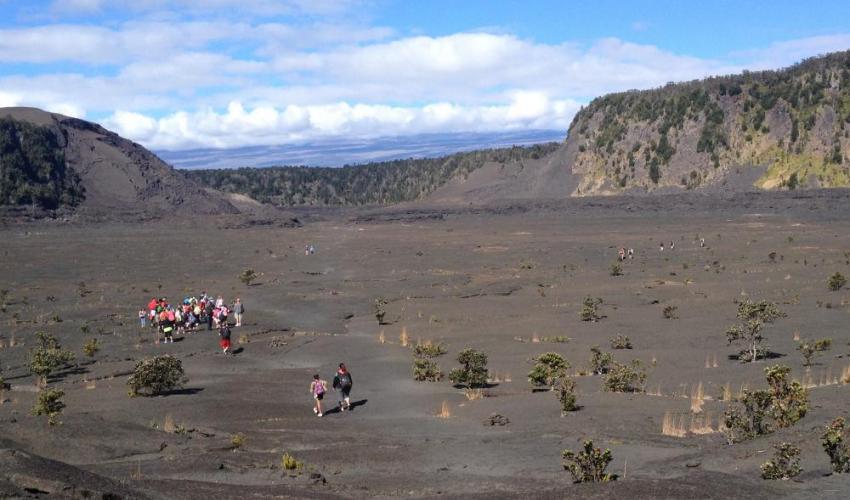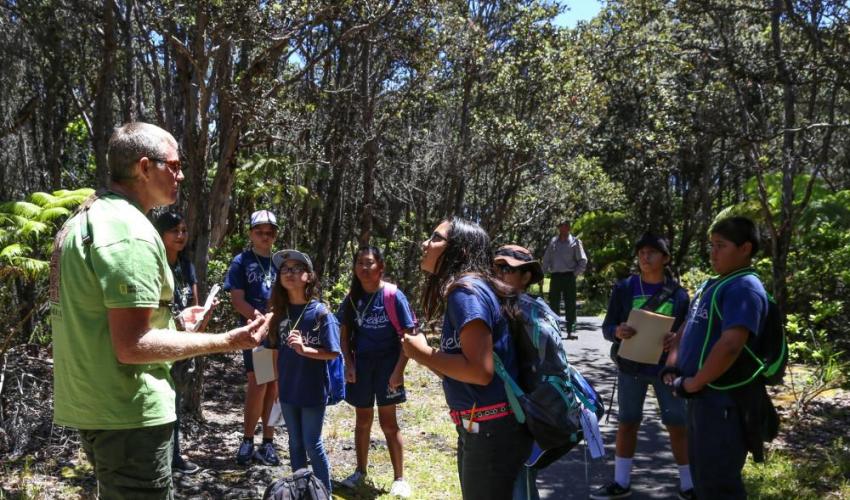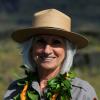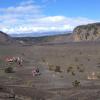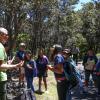Cindy Orlando, Superintendent of Hawai‘i Volcanoes National Park talks about how the park is connecting with Hawaiian youth for conservation of the State’s natural and cultural heritage.
Hawai‘i Volcanoes National Park covers over 333,000 acres on the southeastern side of Hawai‘i Island. The park stretches from sea level to the 13,677-foot summit of Mauna Loa – the largest active volcano on the planet.
Hawai‘i Volcanoes became Hawai‘i’s first UNESCO World Heritage Site in 1987 for its astonishing natural diversity. The park is home to over 50 types of endangered plants and animals, over 40 native birds (including the endangered nēnē, or Hawaiian goose), 400 native plant species, 1,100 species of native invertebrate and one terrestrial mammal (the Hawaiian hoary bat). The park’s most common tree, the ‘ōhi‘a lehua, is highly adaptive; it can actually hold its breath by closing the pores on its leaves during periods of volcanic gas eruptions.
Both the U.S. National Park Service and Hawai‘i Volcanoes National Park celebrate centennials in 2016, representing a unique opportunity to inspire today’s youth to mālama - to care for - the native Hawaiian ecosystems that are protected by the park.
Engaging youth in conservation is important because in the future it will be they who will be at the forefront of conservation, science and the perpetuation of traditional Hawaiian culture
Hawai‘i Volcanoes National Park has a long tradition of connecting keiki (children) in classrooms to the volcanoes, to Hawaiian culture, and to the native plants and animals in their backyard through shared stewardship, the Youth Ranger Internship Program, the Junior Ranger Program, and by serving as a living laboratory for onsite discovery.
Getting keiki into the park is an important step in creating a future generation of conservationists. With this in mind, the recently launched Every Kid in a Park program began offering fourth graders and their family’s free entry to the park if they complete a short activity online.
The park also hosts an annual BioBlitz and Biodiversity and Cultural Festival to celebrate and showcase Hawai‘i’s biodiversity, history and cultural connection to the land. Participants of all ages can enjoy hula and music, try Hawaiian crafts, and learn about the importance of the conservation of biodiversity and culture from skilled practitioners and interactive exhibits. The theme of this year’s BioBlitz festival is E Ho'omau, which means to perpetuate and cause good to be long-lasting.
The park’s 36th BioBlitz festival is taking place just prior to the IUCN World Conservation Congress 2016 on Saturday, August 27, giving Congress participants the opportunity to experience authentic Hawaiian culture in a festive, hands-on and meaningful setting.
We look forward to helping you “Find Your Park” at Hawai‘i Volcanoes National Park’s BioBlitz in advance of the IUCN World Conservation Congress 2016 in September in Honolulu, Hawai‘i.
– Cindy Orlando, Superintendent of Hawai‘i Volcanoes National Park




